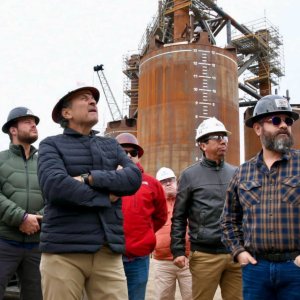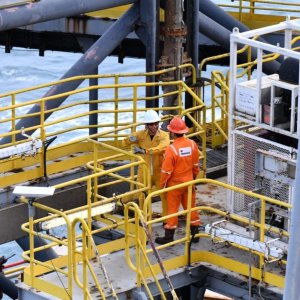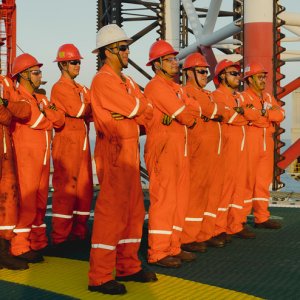
Shale Development and Mexico
Opportunities for unconventional or shale oil and gas production in Mexico remain in the earliest stages of development. While shale gas production increased significantly in the US since 2000, and shale oil production since 2008, no other country in the world has yet to replicate that success. Due to its close proximity to major shale field development in South and West Texas, Mexico is particularly well-positioned to take advantage of unconventional extraction techniques. However, significant challenges will have to be addressed.
Mexico already imports refined products and natural gas from the US. In 2015, Mexico imported over 1tcf of natural gas from the US, up from only 333bcf in 2010. New natural gas pipeline projects have resulted in the transport of additional supplies to Mexico. All of this while Mexico sits on top an estimated 545tcf of shale natural gas reserves. Estimates for unconventional oil reserves in Mexico are believed to be 13 billion barrels (EIA 2013).
The importance of the Energy Reform in Mexico should not be underestimated. While Mexico is a net oil exporter, decreased production over the years has narrowed that margin. Mexico’s oil consumption in 2013 was 2 million b/d and production was only slightly higher at approximately 2.5 billion b/d. Despite increasing amounts of investment on exploration and production by PEMEX, oil production in the country peaked in 2004 and has been declining steadily in the decade-plus since then. Were it not for the prospect of the Energy Reform’s implementation, Mexico would likely transform from a net exporter of crude oil to a net importer within a few years.
The bulk of Mexico’s shale prospects appear to lie in the north and northeastern sections of the country, where infrastructure is often largely undeveloped. This means that in order to tap the country’s bounty of shale oil and gas, infrastructure such as roads, housing, rail, pipelines, and many others will have to be built first. The ability to develop a suitably skilled workforce will be essential to long-term success. Security issues must also be addressed. As such, the potential unconventional oil and gas production in Mexico poses many interesting challenges in the wake of the recently enacted Energy Reform.
On the other side of the Rio Grande River, South Texas has seen extraordinary economic activity as a result of the Eagle Ford Shale. The economic impact in 2013 was estimated to be US$87 billion, supporting over 150,000 full-time jobs (Tunstall, Oyakawa et al. 2015). It is interesting to note that while the Eagle Ford formation continues well into Mexico near Monterrey and over to the eastalongtheGulfCoast,theproductionactivityliterally stops at the river border. In the Eagle Ford, over 10,000 wells have been completed to date. In Mexico by contrast, there have been only a handful of test wells developed.
The Eagle Ford formation actually continues on into Mexico. On the Mexican side of the border, there are apparently several formations, with the Burgos Basin as perhaps the best known of all. These preliminary maps provided by the EIA suggest that shale formations in Mexico extend south, well into the state of Veracruz and perhaps even beyond. The reasons that shale development has flourished in the US and not elsewhere to date is related to a couple of key issues. First, the US is one of the few countries in the world that allows private individuals to own mineral rights. In most other countries, private individuals may only own the surface rights to the land. Mineral rights in most countries are either owned by the state, as is the case in Mexico, or the monarch, as is true for the UK, or perhaps by the currently reigning dictator in developing countries with despotic regimes. Private ownership of mineral rights creates a powerful incentive to develop the oil and gas resources below ground. One of the reasons the Eagle Ford could be developed so quickly was because E&P companies could negotiate and close lease and royalty agreements in a timely manner and begin drilling operations. Working with state bureaucracies, by comparison, is often a time- consuming process.
The other reason, and probably the key factor, in the US shale development, was due to the nature of companies that pioneered the unconventional techniques. Shale oil and gas production techniques were not pioneered by the major oil companies. Rather, development occurred due to the persistence of independent oil and gas companies like Mitchell Energy targeting natural gas formations (Hinton 2012). These independent companies experimented and risked capital until they figured out how to unlock the shale oil and gas trapped inside the rock.
The story of the prospects for the Energy Reform in Mexico necessarily relies on the experience north of the border, as the US has been the only country to exploit unconventional techniques, even though shale oil and gas reserves appear to be in abundance throughout the world. The significant shift in fortunes in the US oil and gas industry as a result of the use of unconventional techniques has been an epochal event that has literally transformed the global energy market. Hence, there is ready demand in many countries for now plentiful US natural gas. The US now produces more natural gas than it ever has, amounting to over 30tcf annually. The fact that the US has the second- lowest cost for natural gas worldwide, preceded by Qatar, has resulted in a plethora of global manufacturers setting up facilities in the US, representing billions of dollars more of investment. Given these recent developments in the US, it is not hard to understand why there is significant global interest in shale oil and gas development. With extreme proximity to the US, particularly the Eagle Ford in South Texas, Mexico may have the best near-term opportunities for shale development of any country if the Energy Reform there can be successfully implemented.
For Mexico in the short term, there may be a shortage of suitably skilled engineers, geologists, and other experts. The high level of unconventional oil and gas development in the US currently limits supply. However, over the longer term, US expertise in shale technologies and techniques can be expected to be exported to Mexico, which will provide positive balance of trade benefits to its neighbor country. While Mexico is a net oil exporter, decreased production over the years has narrowed that margin. Mexico’s oil consumption in 2013 was 2 million b/d and production was only slightly higher at approximately 2.5 billion b/d. And as mentioned previously, Mexico’s oil production peaked in 2004 and has been declining steadily in the decade-plus since then.
It is important to note that unconventional techniques vary significantly from more traditional conventional projects. The major E&P companies typically engage in capital- intensive projects such as deepwater drilling that requires hundreds of millions of dollars invested into a single platform. This is a significantly different business model than the drilling-intensive operations associated with companies focusing on shale oil and gas opportunities. In fact, the use of unconventional techniques has been likened to a manufacturing process, as opposed to traditional wildcatting, where early oilmen relied not only on geology, but also intuition. E&P companies using unconventional techniques continue to adopt more systematic approaches in order to drive their completion costs down. In addition, a myriad of new technologies that involve logistics, instrumentation, chemistry, sensors, and seismic imaging, among many others, are in the early stages of development
and implementation (Mills 2015). Over time, these techniques can be expected to significantly drive down costs and make shale oil and gas development in challenging environments like Mexico more feasible.
The Energy Reform in Mexico will continue to play out over the coming years, but ultimate success is by no means guaranteed. The passage of constitutional changes to allow private investment in the energy sector, coupled with the enactment of secondary laws, was a significant achievement to be sure. However, the next phase of implementation will certainly prove equally or even more difficult. The prospects for full implementation of the Energy Reform in Mexico continue to remain promising, but the landscape will remain one of continuous change. Previous experience in another industrial sector may be instructive. For example, it is worth noting that in the automotive industry, Mexico now ranks as the number four manufacturer worldwide and continues to expand. Production in light vehicles has grown from 2.1 million units in 2008 to 3.2 million units in 2014. By 2020, that number is expected to reach nearly 5 million units of light vehicles produced, so a worthy precedent has been established in the automotive sector.
For northern Mexico specifically, successful shale oil and gas development will have to be preceded by a wide range of infrastructure projects. Natural gas production, for example, is dependent on a pipeline network that runs all the way to the wellhead. Development of a suitable pipeline system will in turn require a skilled workforce, housing, roads, rail, water supply and medical facilities to support construction activities. The investment at both the state and federal level will be substantial, but would go a long way toward improving the quality of life in one of the most neglected areas of the county. No doubt, significant hurdles remain with regard to the ultimate success of Energy Reform in general, and shale oil and gas development in particular. However, if these issues can be addressed in the coming years, Mexico is in a position to significantly improve the quality of life of many of its citizens, as well as usher in a new era of energy independence with regard to natural gas and remain a significant oil exporter to the world market.
















